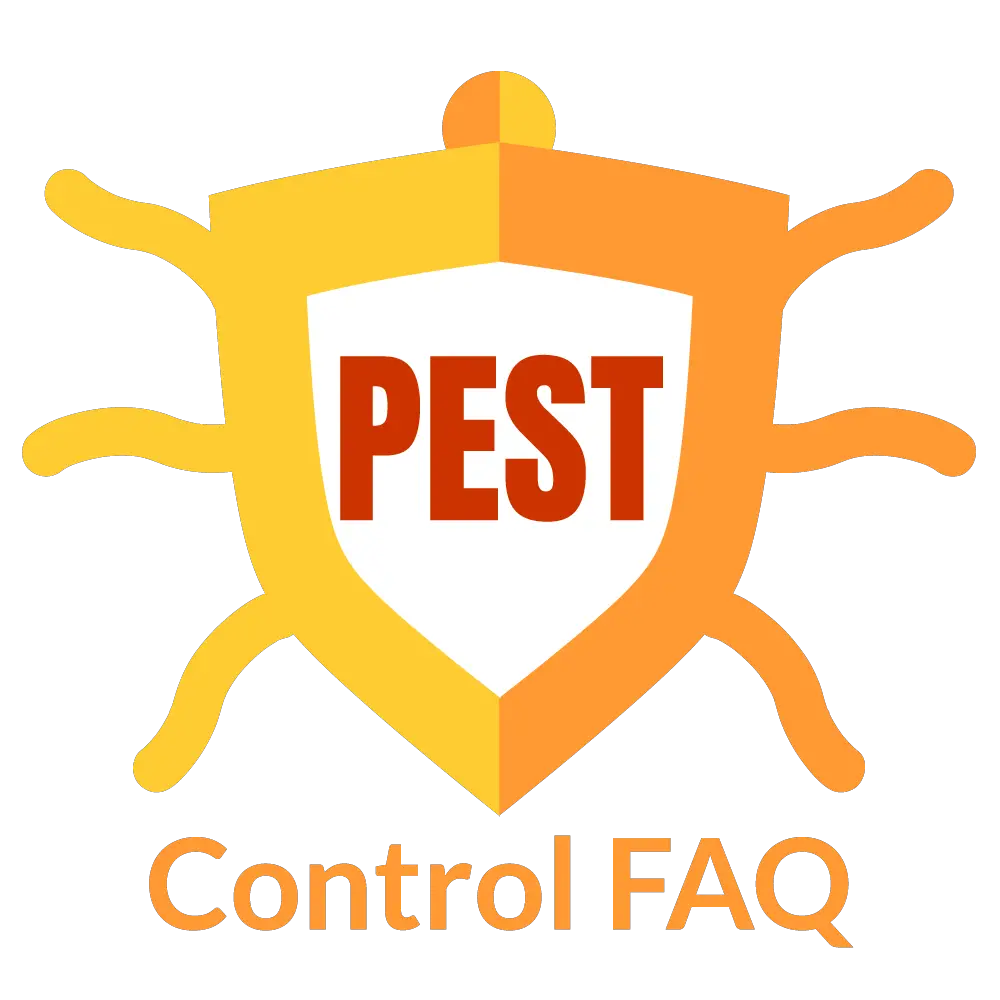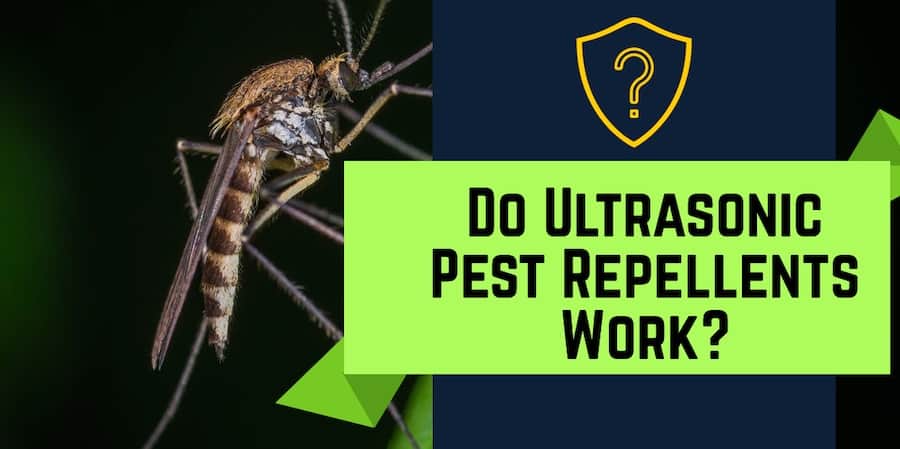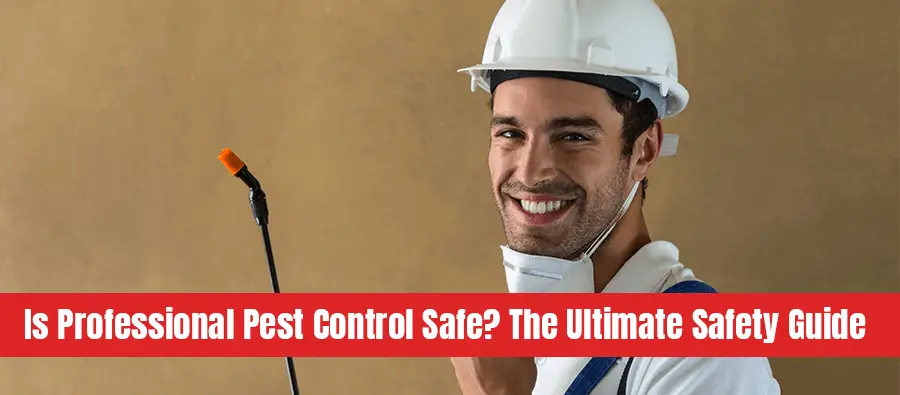There are tons of ultrasonic repellents that promise to keep pests out of your properties. Since I was a bit skeptical about these promises, I did some research to figure out whether or not they’re true.
So, do ultrasonic pest repellents work? According to studies, commercial ultrasonic repellents are mostly inefficient or tend to have a short impact on pests. Since the manufacturers have not been able to provide scientific evidence to back up their promises stated in 2016, you should avoid ultrasonic pest repellents.
If you decide to use an ultrasonic pest repellent, be careful and don’t buy it from a random shop. It would be wise to read product reviews from people with confirmed purchases. These can be found on sites like Amazon.com.
Let’s dive in and take a closer look at ultrasonic pest control devices and see what kind of proof scientists have against it.
What is an ultrasonic pest repellent?
Ultrasonic repellents are devices that use ultrasonic sound waves to irritate pests and insects and prevent them from building nests or homes.
Ultrasonic waves use a frequency inaudible to human ears but disturbing for pests. Usually, these frequencies range from 30 kHz to 55 kHz. Most of the ultrasonic devices are described as “suitable for mammal pests and arthropods.” It means that the product is intended to work against pests like mice, rats, mosquitoes, flies, fleas, and ticks.
These devices are simple to use: just plug it into your home’s electrical outlet and sound waves are emitted. According to the product description, these sound waves cause an audiogenic seizure response (which may end in death); therefore, it prevents insects from building nests near the source of the noise.
This is not actually a new approach since the ancient Chinese used sound waves for to keep insects out of their buildings, but in the mainstream, it mostly took root in the 1960s (the first device came from Philips in 1962).
Nowadays, ultrasonic pest repellents are part of a big business with more than 60 manufacturers/retailers and an estimated market value of $100 million. Since most of them are sold at a reasonable price (from $10 to $50) and are very easy to use, it is tempting, as a consumer, to buy one, especially if your neighbor claims they have used one and “haven’t seen any mosquitoes for years.”
What kind of proof do manufacturers claim to have?
Unfortunately, there is not much to report here. Although I tried to find a study from the manufacturers to back up their claims that their products are tested in different conditions, I had no luck.
Also, if we are talking about how ultrasonic products operate, then there are lots of product patents with vague wording, or ones that lack scientific proof to measure and support their claims. On their websites, these claims are often bolstered by fake positive product reviews by affiliate marketers who make money from each sale.
While doing research for this article, I saw vague references that said, “Some studies conducted tests…” or “The study showed that the product successfully worked against rodents from 80% of the sites tested.” However, I wasn’t able to find any links to the studies or additional materials.
The critique, which can be found in different sites, points out that studies conducted by manufacturers are not held in different conditions and therefore cannot be expanded to all pests or situations.
Based on the lack of evidence provided by manufacturers, in 2001 the U.S. Federal Trade Commission sent a warning letter to more than 60 manufacturers in which they stated that manufacturers must support their claims with scientific evidence.
What kind of proof do scientists have?
With a little effort, I found at least four studies from 1995 to 2015 that tested the efficiency of ultrasonic pest repellents. Here are short summaries of these studies and their results.
University of Nebraska (1995): Electronic Rodent Repellent Devices: A Review of Efficacy Test Protocols and Regulatory Actions
Brief overview: This document reviews research reports and data sets for devices that were operating at selected frequency ranges and intensity levels.
Results of the study: The results showed only marginal repellency effects and rapid habituation. For the repellency, they saw only a 30-50% reduction in movement activity, but for rapid habituation, no significant repellency effects were noticed beyond three to seven days of exposure.
A full overview of the study can be found here.
Kansas State University (KSU) test results with ultrasonic devices against arthropod pests (2000-2003)
Brief overview: They bought five random devices, which were marked as A, B, C, D, and E. During the tests, one random ultrasound-generating unit was used on nine groups of arthropod pests (Cat fleas, German cockroach, Ants, Eastern yellow jacket, Long-bodied cellar spiders, Field and house crickets, Flies, Imperil scorpion, and Indian meal moth).
Some of the conclusions from this study:
- Most of the tests ended with “no effect” or “unclear” results (see image below)
- Tests conducted lacked “real-world” conditions (background noises)
- If existing devices are not improved using scientific research, then they may not have a promising future
You can take a look at the full study with the results for every arthropod group here.
College of Agriculture & Life Sciences (2015)
Brief overview: This document evaluates current available ultrasonic devices and attempts to figure out whether or not they are useful. They provide references to at least five different studies that all tested the effectiveness of ultrasonic pest repellents.
Results provided in this document: They conclude that use of commercially available pest devices is not advised since they are not effective and therefore won’t resolve your pest problems. For example, they point out the 2007 report by Cochrane, which said that based on the ten field studies there was no evidence that ultrasonic pest repellents have any effect on mosquitoes.
An interesting thing they point out is that devices developed by researchers demonstrate positive results, but they have yet to be marketed. So, maybe there is some hope for the future.
The full document can be found here.
Other warnings
As mentioned above, in 2001 the Federal Trade Commission warned consumers about ultrasonic pest repellents. They sent warning letters to more than 60 manufacturers in which they challenged them to provide evidence to their claims.
FTC urged the manufacturers to examine their advertising and provide reliable evidence to their claims. I guess this is the reason that nowadays we see more realistic promises compared to what we’d see ten years ago.
Consumer Reports provided a list of five types of insect repellents that aren’t supported by evidence and therefore should be avoided. One type of those products in this list was the ultrasonic pest repellent.
Are ultrasonic pest repellents totally worthless?
Not exactly. In the 2015 study described above, although most of the ultrasonic devices show bad results, some have shown limited positive effects on mosquitoes and pests.
Also, if you take a look at the Kansas State University study described above (page 103 in the document), you’ll see that there are some “fair” and a couple of “good” results on some pests, such as crickets.
What if you already have this device and want to give it a chance?
Here are some suggestions you should follow:
- Identify the room with the most pest activity and install your device there
- Usually, it is wise to use one device per floor. If you have larger areas (e.g., attics, garage), then additional units may be required
- They do not need any maintenance; just plug it in, and it should be good to go (the indicator light on the device lets you know that the unit is working)
- Do not place it behind furniture or other items that can block the signal
- It is not advised to use this device around hamsters, guinea pigs, rabbits, gerbils or other rodents
- Test it out in different locations to see which one yields the best results
Should you buy an ultrasonic pest repellent?
Although ultrasonic pest repellents seem to be a solution to your pest-related problems, based on the research I have described in this blog post, I would not recommend buying one of these devices.
Or, if you are willing to buy one and give it a chance, then read product reviews beforehand. Word of caution: There are lots of affiliate marketers who are doing “reviews,” but their primary task is to send you to the product page so that they can collect an affiliate fee. The recommended place for reading the reviews is Amazon.
To sum it up: Do Ultrasonic Pest Repellents Work?
Most of the times they don’t but some devices have shown limited positive effects on some pests and not the others. Therefore our recommendation is to keep away from them and concentrate on other pest control devices.
Related questions
Is it safe to use DEET-based repellents? The EPA reviewed the safety of DEET in 1998 and in 2014. According to the reviews, they believe DEET is safe and does not present a health concern (including children). As always, that means that we are talking about the normal use of DEET. (read full article here)
How should I store insect repellents? Insect repellents should be stored away from heat or flame, and they should be kept in areas that are inaccessible to children.
Can pest control get rid of snakes? The answer is no; pest control can’t get rid of snakes. Pest control can only manage small insects. Since snakes are reptiles the only way to take them away from your home and surrounding is to catch them. (read full article here)





